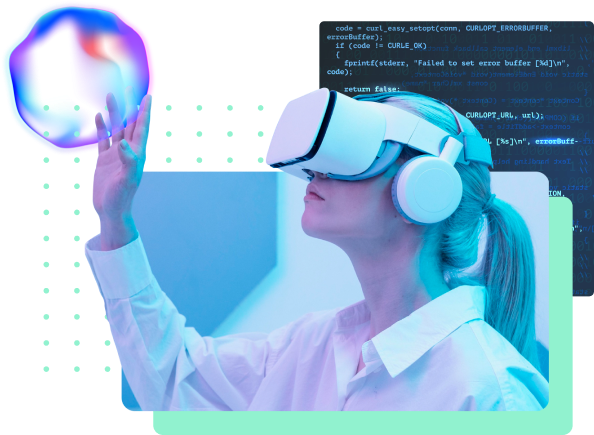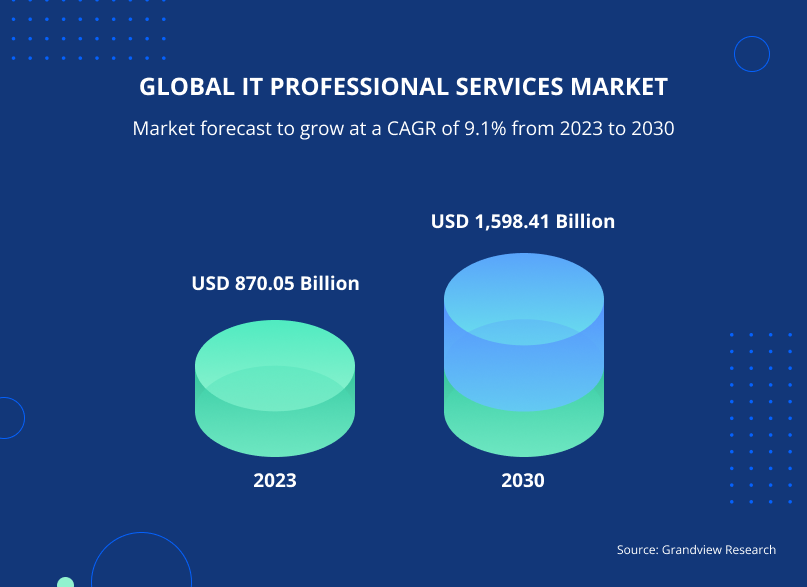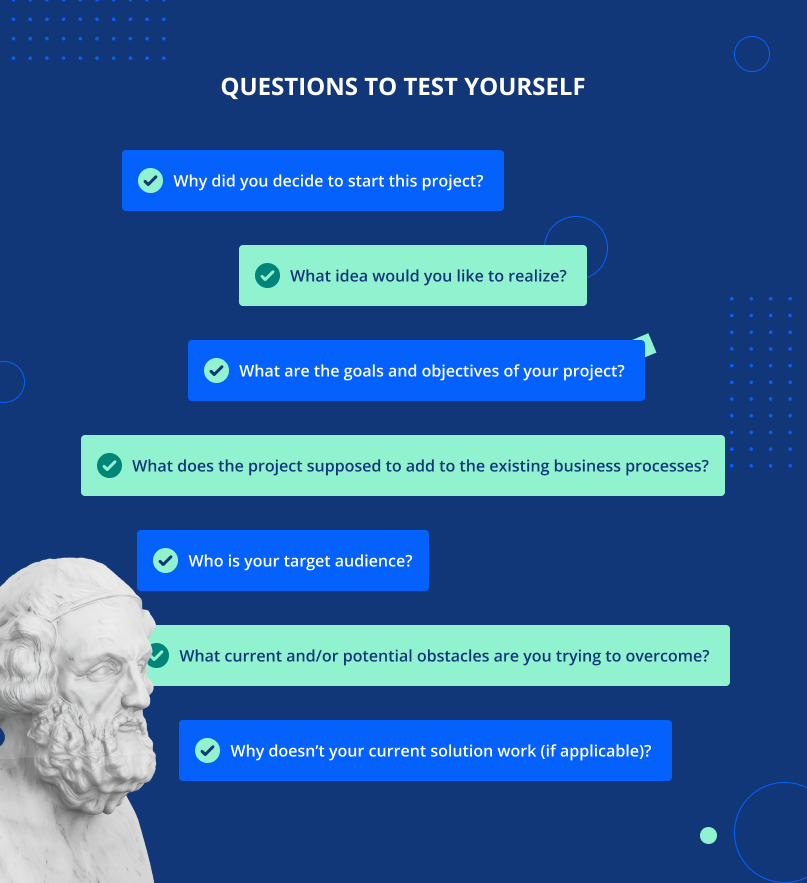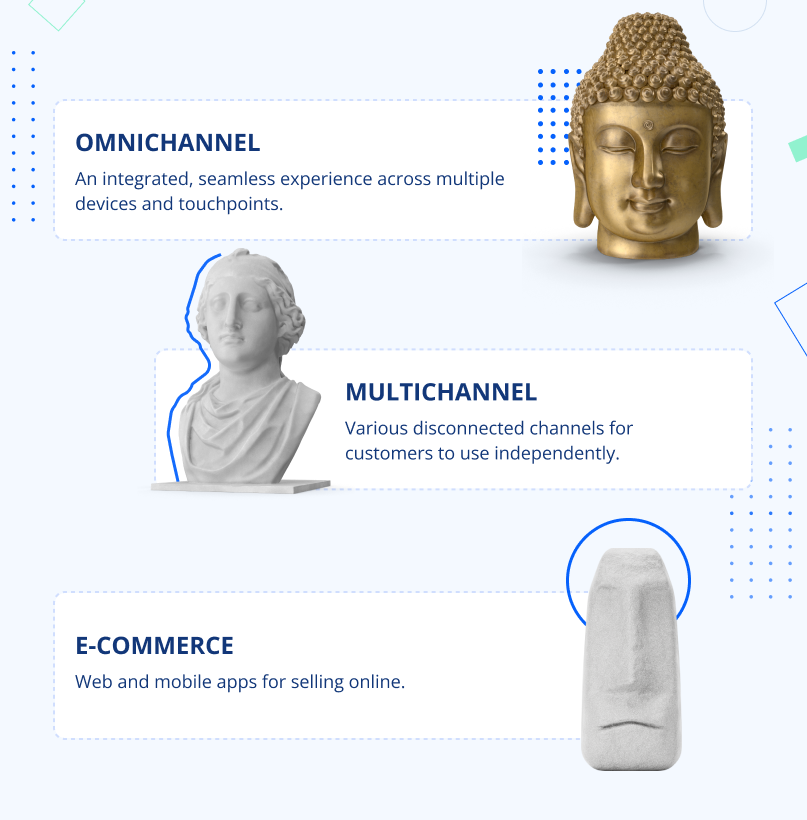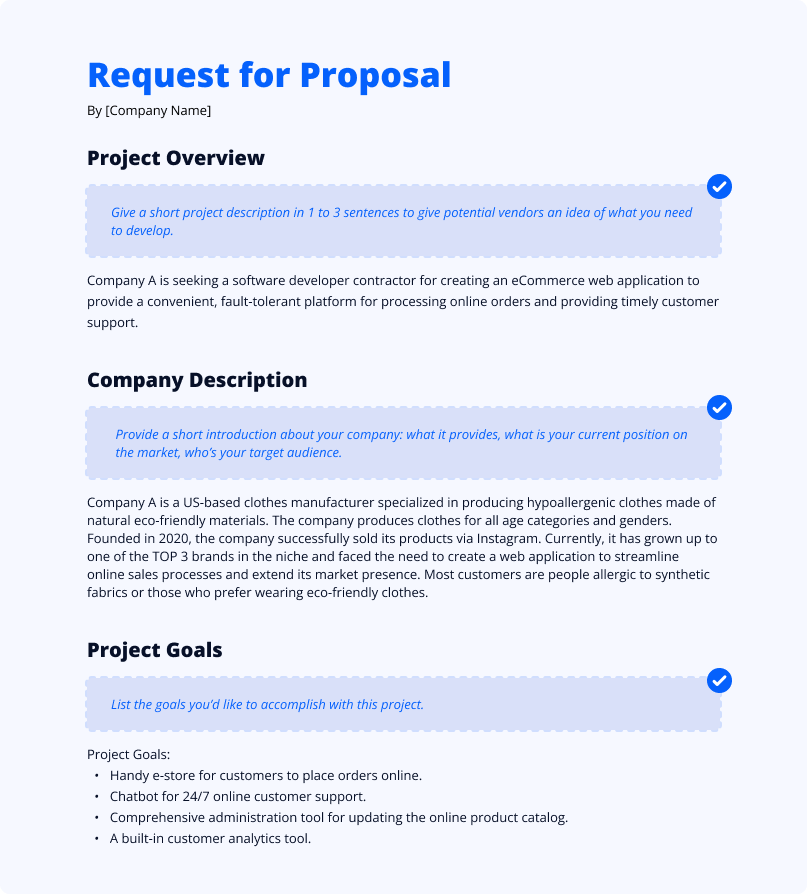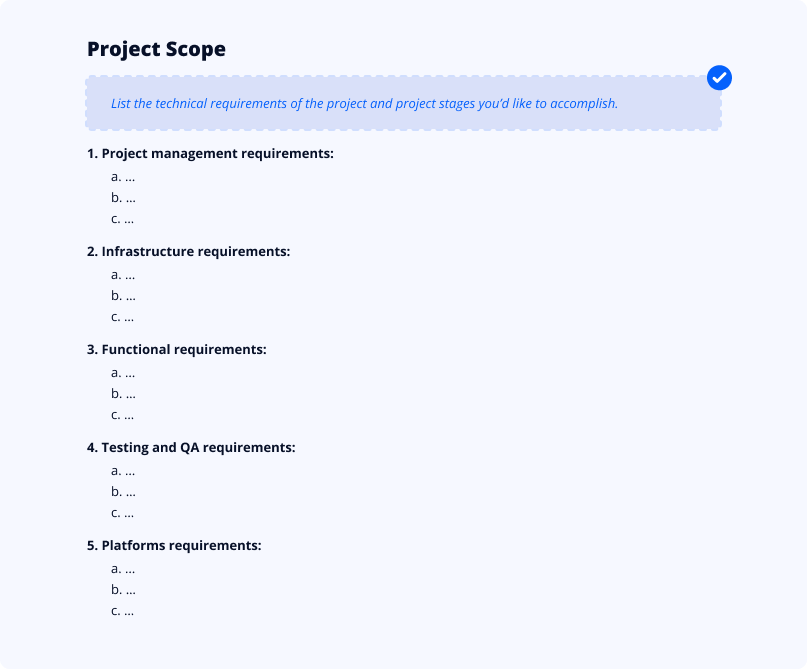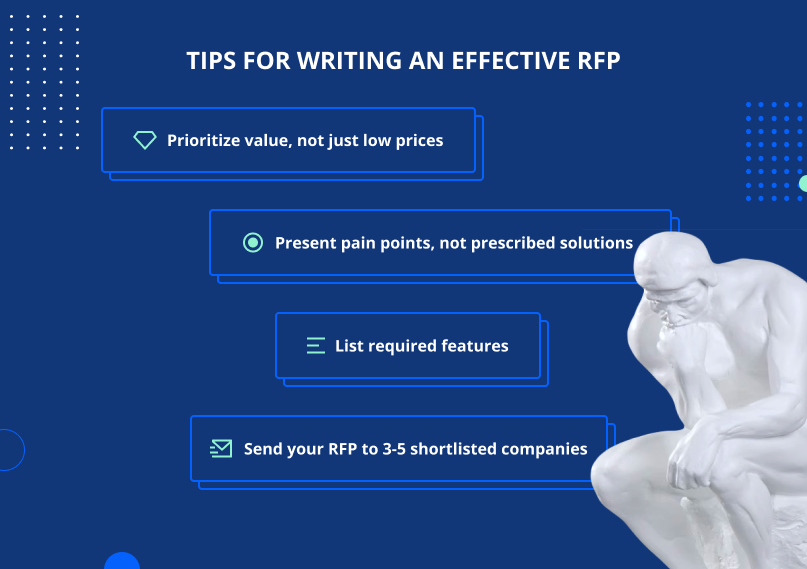Business IT directors and managers allocate millions of dollars annually to expanding and outsourcing software projects. According to Grandview Research, the global IT professional services market is projected to reach $1.5 billion by 2030.
Given the considerable financial stakes, IT managers and C-level executives should create an explicit Request for Proposal (RFP) to engage suitable vendors. When crafted correctly, an RFP document helps eliminate “gray zones” in requirements and deliverables for software projects.
However, many companies seeking professional IT services lack the expertise or established processes necessary to create such documents. In such cases, a customizable RFP template can greatly simplify this task.
In this article, we delve into the essentials of the RFP process and provide guidance on structuring an impactful RFP for software development. Additionally, we’ll offer a sample RFP template for software projects, which you can easily adjust and use efficiently.
What is an RFP for Software Development?
A software development RFP is the initial document you write before selecting a software development company. It provides a comprehensive outline of your software project and invites chosen software vendors to submit their proposals.
An effective request for proposal ensures project transparency and mitigates risks of contracting unsuitable IT service providers.
Ultimately, a well-crafted RFP simplifies the process of establishing enduring business partnerships and aligning mutual expectations.
Who Should Write an RFP?
As the core goal of the RFP process is IT vendor selection, it’s essential to involve those dedicated to project success. Hence, composing an RFP for software development requires relevant members who know the project goals in detail.
This could be a product owner, project manager, or business analyst aware of the project scope and specifications. Creating a meaningful RFP document should also involve engineers who understand the technical intricacies. Essentially, the project manager outlines the “what,” while technicians clarify the “how.”
Note: In small startups, it’s common for CEOs or co-founders to create RFPs and choose potential vendors. In larger organizations, the process of RFP creation, proposal evaluation, and contractor selection is done by executive managers or procurement professionals.
Why is Software Development RFP Important for IT Projects?
The benefits of an RFP for software development
The advantages of using RFP for software development lie in maximizing efficiency while minimizing possible project pitfalls. A properly formulated Request for Proposal enables businesses to:
- Select the Right Software Development Company. With a structured RFP, you can easily evaluate potential vendors side by side and find the software development team that aligns best with business and technical requirements.
- Clarify Project Requirements. A precise RFP provides a clear picture of your project’s needs and perspectives, helping software vendors provide accurate proposals.
- Save Time. A detailed RFP minimizes repetitive questions from vendors and often is the foundation for the Statement of Work (SOW) and similar project documents.
- Ensure Transparent Contracts. Supported by a comprehensive RFP, software development contracts should correspond to the specified project scope, services, and deliverables provided.
Note: Crafting a software RFP template and setting up a dedicated team becomes essential when your software project involves complex technical requirements and intricate timelines, requires specialized expertise, and plays a strategic goal for your organization. In other cases, it can be enough to augment your team with required remote developers.
RFP vs. RFI vs. RFQ
An RFP is sometimes confused with a Request for Information (RFI) or a Request for Quotation (RFQ).
The RFI is used for clarifying the information on the capabilities, products, or services of an IT vendor. It is a starting point to shortlist potential candidates before diving into detailed proposals.
The RFQ focuses on cost quotes and payment terms. It helps decision-makers identify the most cost-effective option among chosen contractors.
Ultimately, RFIs and RFQs are subsets of a broader RFP process, aiding in contracting with the best-suited vendor.
The RFP Process: How to Write an Effective Request for Proposal
Creating a winning RFP involves a delicate balance.
Your request for a proposal should comprehensively outline the most critical aspects and offer a clear vision of your objectives. At the same time, RFP for software development should not be overwhelming, as it can prevent the creativity of a software vendor.
To help you navigate this balance, the following paragraphs present five steps in a standard request for proposal process.
Step 1. Executive summary — company description and project goals
Start your RFP with a project overview, company details, and overall project objectives.
A project overview includes a brief product description and its current state — whether it’s an idea, prototype, or evolving solution. This helps software development vendors to catch the project essence from the outset.
Follow it with a brief company description, including your business niche, market position, and target audience. Make it concise but informative.
Note the following recommendations for project goals:
- Go beyond your business scope. For example, the purpose of creating a website might be promoting multi-channel customer interaction, not just product sales.
- Specify the growth area of your business, like doubling sales by 2025.
Why is this an important step? By providing project information and company background, you will ensure that the suppliers understand what your company needs. This allows them to propose solutions corresponding to your business goals.
Step 2. Software development project cope
When moving to the technical aspect of your request for a proposal, everything gets a bit more complicated. This section is probably the most detailed component of a proper RFP.
Why is this an important step? It helps the software development team to determine the scope of work, project lead time and cost by considering appropriate developers’ hourly rates.
2.1. Project management requirements
In this section, you stipulate how you intend to maintain communication and manage dedicated software development teams. Ask about the project management tools they use and how you’ll receive updates for each milestone.
Communication: Regulating interaction with development teams allows you to determine tasks, manage them, and perform process modeling. Trello, Skype, and Jira are popular project management tools commonly used by software development companies.
Methodology: Choosing the right methodology is important as it determines how you will cooperate with the team. There is no universal option since each methodology has unique principles and advantages. Your choice should primarily rely on project requirements. For example, software projects with frequently updated requirements need Agile methodologies like Scrum, Kanban, etc.
Make sure you or your team is comfortable with the project management tools and methodologies your vendor is using or offering. This will ensure a smooth workflow.
Note: Don’t forget to decide and inquire about a dedicated Project Manager in advance. Otherwise, you’ll be managing the software development team yourself.
2.2. Infrastructure requirements
Specify key software infrastructure requirements to ensure project security at every stage of software development.
Computer Protection/Internet Security/Data Security Requirements. For this, software developers must use:
- Antiviral software managed on the domain level
- Network Attack Blocker
- IPS (Intrusion Prevention System)
- Network Security
- SaaS Security
- Spam Protection
They must also adhere to high security standards such as backup generators and uninterrupted power supplies. For example, to ensure data security, it is necessary to implement regular infrastructure monitoring, password management, and email authentication.
Intellectual Property Rights in Software. To ensure IP safety, consider using outsourcing contracts, NDAs, and internal business methods.
2.3. Functional requirements
Enumerate the required functionality. Provide clear descriptions so that the software development team can understand how your product should operate.
When describing features, always correlate ones to their purpose to ensure designers and software developers precisely understand the task. Below is a list of potential functionalities you may include when outlining project requirements in your request for proposal:
- Product-oriented. For example, the order processing system must inform the manager about new orders.
- User-oriented. For instance, the buyer should be able to add items to the “Favorites” folder.
- Optimization-oriented (maximum benefit for the user). For example, the buyer doesn’t need to confirm the order after placing it.
- Object-oriented (list of characteristics). For instance, the order must contain properties like user information, delivery address, list of items, payment method.
- Process-oriented. For example, orders need to synchronize with an ERP system to enable quick order processing and account adjustments.
Template for describing each functional requirement:
- Feature: Name or definition.
- Description: Purpose of the feature.
- Goal: Task or action the user wishes to perform.
- User Problem: Point of concern.
- Value: How the proposed solution benefits the user.
- Assumptions: Business, user, or technical assumptions.
- Forbidden: Everything beyond the scope of this feature.
It is important to pre-select metrics for evaluating each feature. By doing so, you will be able to understand if they achieve their desired results.
Example: Multi-language support that is expected to increase the number of international customers by 40%.
Note: Functional requirements are important for request for proposal, but not critical. They may change over time but are helpful to convey your business objective. For instance, “We aim to create convenient Netflix-style navigation, Amazon-style filtration mechanics, and Spotify-like design.” Even though it’s slightly an exaggerated example, software development teams can offer recommendations relying on this overview.
2.4. Quality assurance & testing requirements
This section focuses on maintaining and improving product quality while reducing or eliminating production errors. It is impossible to develop a software solution without a reliable quality assurance process.
Based on project requirements, choose the most suitable testing type for your needs. You can explore fitting options at Guru99.
If necessary, state the software testing tools you require:
- Testim – scalable AI-based testing automation.
- Kobiton – best suited for application testing automation on mobile devices.
- mabl – testing automation platform with low code level.
- Global App Testing – best suited for integration with third-party tools.
- QAProSoft – free, open-source testing automation ecosystem.
- Selenium – a set of open-source tools for software automation and testing, including Selenium WebDriver, Selenium IDE, and Selenium Grid.
2.5. Platform requirements
Choosing platforms can be influenced by factors like timeframes, target audience, and expected budget. Define the platform(s) your solution should be implemented on:
- iOS
- Android
- Web
- Desktop
- Cross-platform
Note: The number of required platforms directly impacts the cost of your software development project. Additionally, keep in mind that each platform demands different levels of developer expertise and skills, leading to financial considerations.
Step 3. Timeline
Timeframes play an essential role as they help set priorities. Therefore, you need to ask yourself two important questions:
- Is there a scheduled launch date for my software development project?
- When should the dedicated software development team start working on my application?
Why is this step important? By having this information, potential suppliers can gather a clear idea of whether they can:
- Allocate the necessary specialists for your project.
- Meet the specified deadlines.
- Accomplish interim development milestones.
Step 4. Pricing model and budget
You can stipulate the supposed cost of the entire project or break down the budget for each stage of software development.
If the estimated project cost doesn’t fit your budget, the development team can help you decide which aspects of your app you can schedule for later.
For instance, if you require a real-time chat feature, there are two options, each with a different cost:
- A chat that includes advanced capabilities like tracking typing indicators, message scheduling and editing. This option is more expensive.
- A simple real-time chat that performs its main purpose which is communication. This alternative is cheaper.
Why is this step important? Reality doesn’t always match our expectations. Hence, it is important to capture the expected results at a known budget.
Step 5. Vendor bids and software vendors selection criteria
Before choosing a software vendor for your project, establish a set of evaluation criteria that are significant for your business. Clearly outline the information you expect from each potential contractor in their proposals. For example:
- A brief description of the developmnet company (including company name, background, structure, qualification, and location).
- A brief description of the development team (experience, tech profile, CVs).
- Information regarding processes (how they manage software development projects, ensure quality control processes, what tools they use for software projects).
- Project plan (stages and estimated timelines).
- Technical vision for the project (i.e., technologies and architecture).
- Budget estimation (project expenses, hourly rates of specialists, possible additional costs).
- Intellectual property conditions.
- Suggestions for improvement of the project and features not covered in the initial project description.
- Clients testimonials and references.
You will receive diverse offers from various companies, each with particular strengths, capabilities, and reputation. Some might stand out due to competitive pricing, while others may offer higher quality. Remember, the purpose of an RFP document is to evaluate how well the IT vendor meets the requirements for your project.
Why is this step important? Including this section in your request for proposal may streamline the comparison of bids you receive. With responses to these specified questions in hand, you’d be able to compare and select the best option.
Great RFPs are Easy
A good and valuable RFP for software development should be clear and concise.
However, some companies produce lengthy 40-page RFPs which make the request inefficient, as they contain a multitude of requirements with zero context. In simple terms, excessively long, complicated, and convoluted phrasing doesn’t lead to effective cooperation. They are unnecessary bells and whistles that will prevent the team from getting to the point and understanding how they can help.

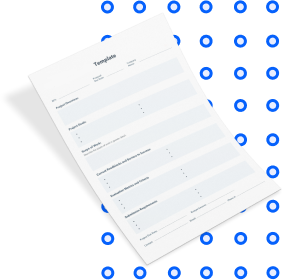
How to avoid this? It’s simple — don’t put in too much unnecessary text. By creating a simple 3-page RFP, software development companies can swiftly catch your point and prepare an accurate proposal.
Some other tips for writing an effective RFP
- Prioritize value, not just low prices. Focusing solely on cost, you may end up with lower quality, limited functionality, slow development and even higher overall costs.
- Present pain points in the request for proposal, not prescribed solutions. We suggest detailing your challenges, but avoid limiting the solutions — let vendors offer options that are potentially more effective.
- Include a list of required features in your RFP software template. The more specific your needs at this stage, the more accurate the pricing and the fewer surprises down the line.
- Avoid inundating too many potential vendors with your RFP. The idea of casting a wide net seems logical. Say, why don’t you request a proposal from fifty vendors instead of five? After all, you’ll get a much better estimate of the base cost and capabilities. Yes, but you should consider the information overload when effectively assessing proposals. Before sending it to the IT service provider, undergo the RFP scoring process. Consider this: if evaluating each proposal takes around 120 minutes, the time and effort rapidly increase. As a result, none of the offers are properly considered, often skipped, or evaluated based on the approximate pricing. To save time and effort, we advise you to preselect 3 – 5 companies that meet your initial idea of a suitable vendor.
Why JayDevs?
At JayDevs, we understand the importance of responding thoughtfully to proposal requests. Our market experience highlights us as a reliable and skilled partner to help in comprehensive software development projects. We are continuously growing by expanding our team with vetted and professional specialists only.
JayDevs is a software development company with senior and lead engineers, QA and DevOps specialists, and solution architects on board. We can provide you with a remote team fully equipped for your next product endeavor.
If you’d prefer to skip writing a Request for Proposal or face trouble describing the technical aspects, you can schedule a call with our sales team to discuss the details!
